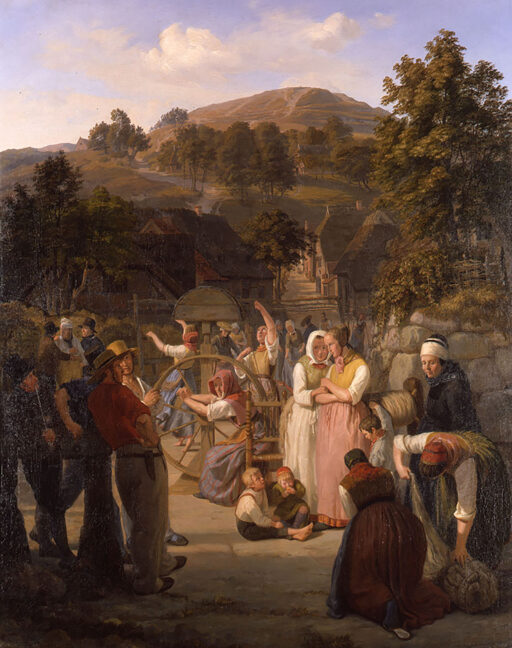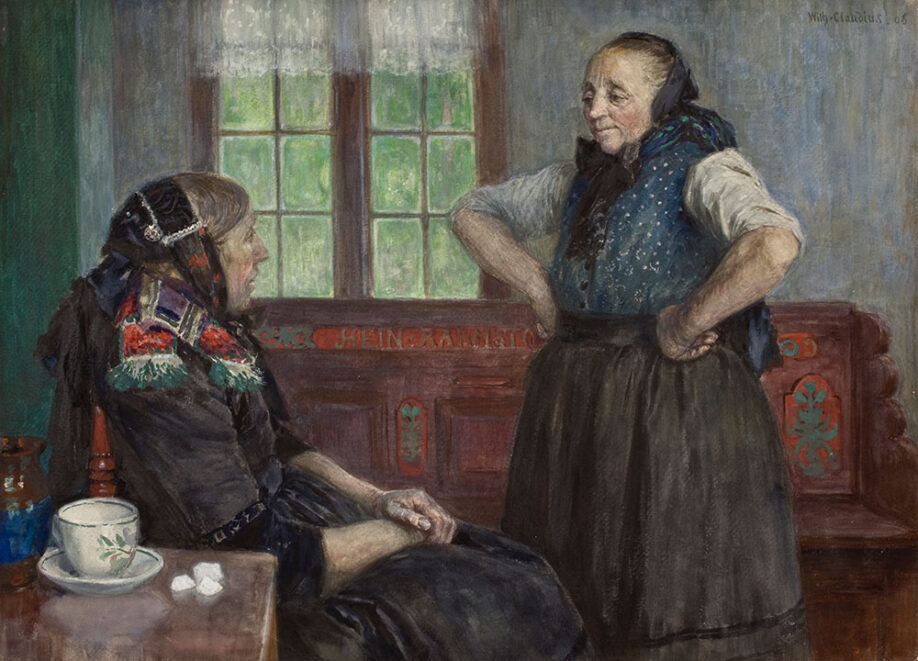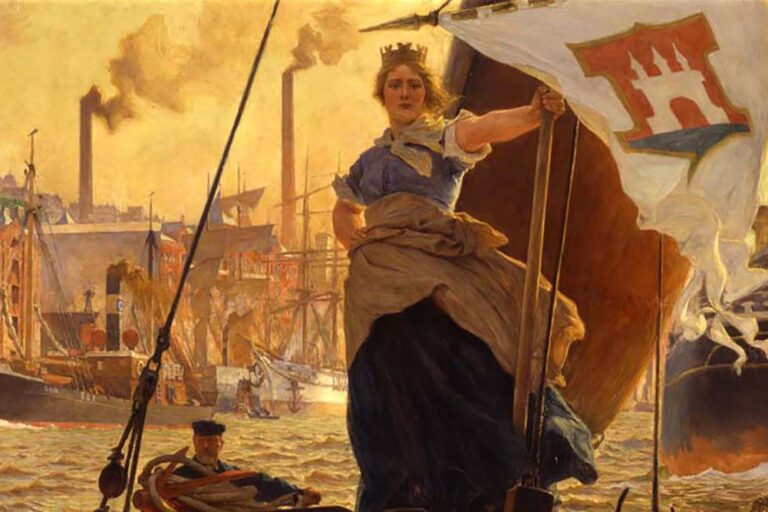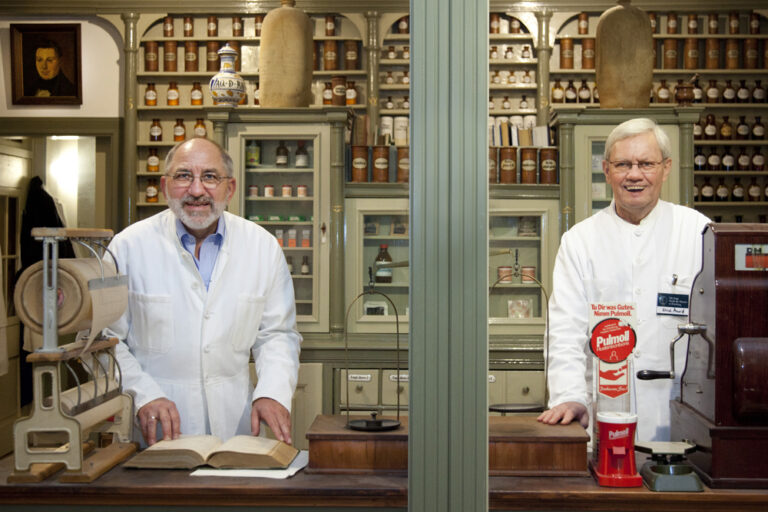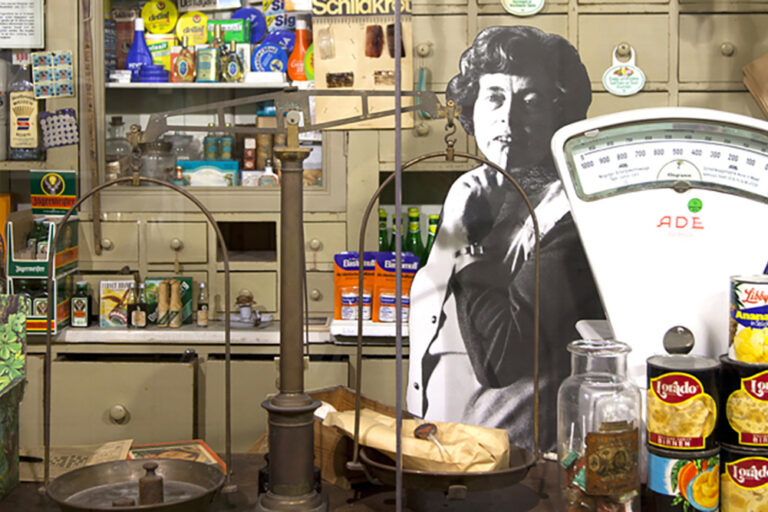
A presentation of paintings from the collection of the Altonaer Museum
The area of staged historical farmhouse parlors and the hall of farmhouse models on the 2nd floor of the Altonaer Museum are among the oldest departments in the permanent exhibition of the house. Otto Lehmann, the museum’s founding director, acquired the various farmhouse parlors from the Hamburg area for the collection starting in 1901 and had them incorporated into the permanent exhibition as evidence of special North German cultural history. With this presentation, however, Lehmann was less interested in a realistic depiction of country life than in the special features of provincial arts and crafts. His educated-bourgeois image of the countryside can be seen above all in the composition of the magnificent parlors and in the museum-idealized staging of peasant living and everyday culture, which underscore the myth of a peasant idyll at the gates of the city, typical of the 19th century. As an introduction to the area of farm parlors and farmhouse models, a presentation of high-caliber paintings from the museum’s collection has been set up under the title “Myth of Rural Life”, which, together with selected objects from everyday rural life, illustrate in their own way rural life idealized into an idyll as an educated bourgeois conception of the good, the true and the beautiful from different artistic positions. In addition to Johann Jacob Gensler’s (1808-1845) allegorical depiction of “Blankeneser-innen bei der Reepschlägerei” from 1837 and Frederikke Westphal’s (1822-1902) “Die Nachmittagsstunde”, which shows a peasant woman of Ostenfeld in traditional costume, paintings by expressionist painters such as Erich Heckel and Georg Tappert can be seen. Although Georg Tappert turned away from the idyllic notion of rural life and depicted previously taboo subjects in his works or used until then unfamiliar modes of composition, the expressionist paintings do not provide a realistic depiction of the rural, but rather reflect the subjective, emotional feelings and experiences of the artist as he observes the landscape and everyday working life. The artists, such as Elsa Haensgen-Dingkuhn, worked in the new objectivity style and were again more concerned with the external, material world after expressionism, but they often visualized it in a highly exaggerated manner in their sobriety. Photographers such as Fide Struck attempted to capture the reality of rural life as realistically as possible using the new medium as documentation, but also here, as in all pictorial works, the focused, subjective gaze of the artist is very clearly evident.
In the context of the farmhouses and the farmhouse models, the small exhibition shows that neither art nor museum staging can completely reconstruct something like the reality of earlier rural life. However, it can and will be understood as an approach to reality, as a stage for memories and as an invitation to exchange and discussion.
The presentation “The myth of country life” was financed with funds from the Friends of the Altonaer Museum.


